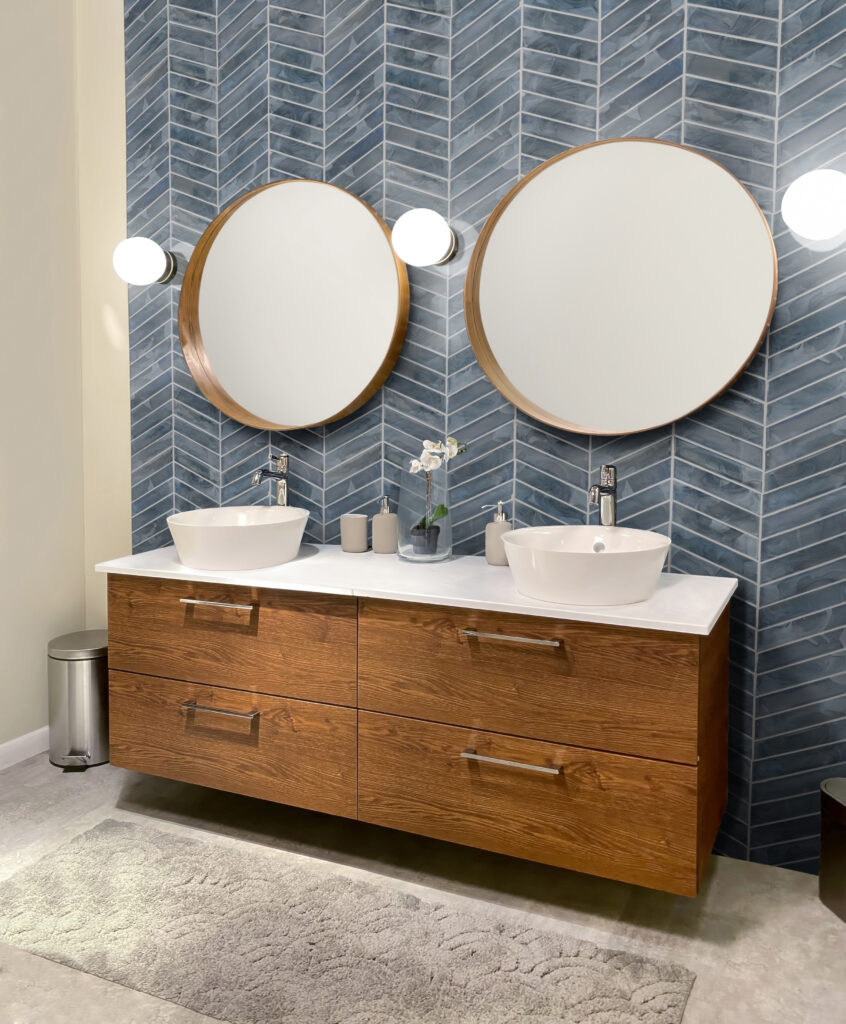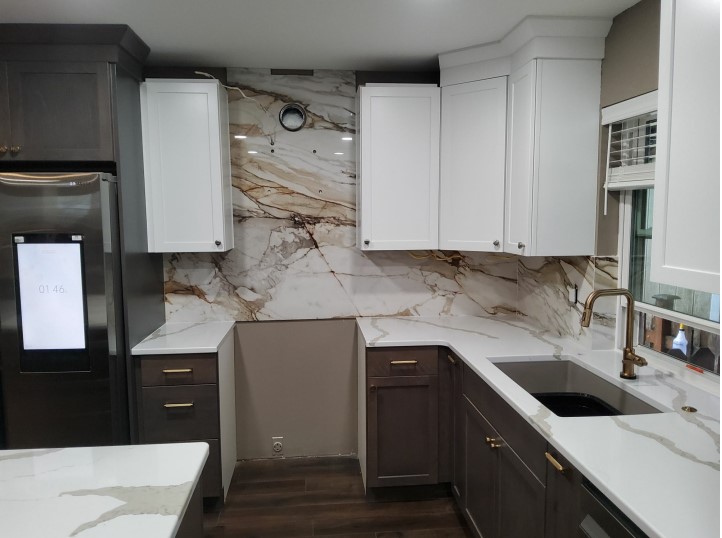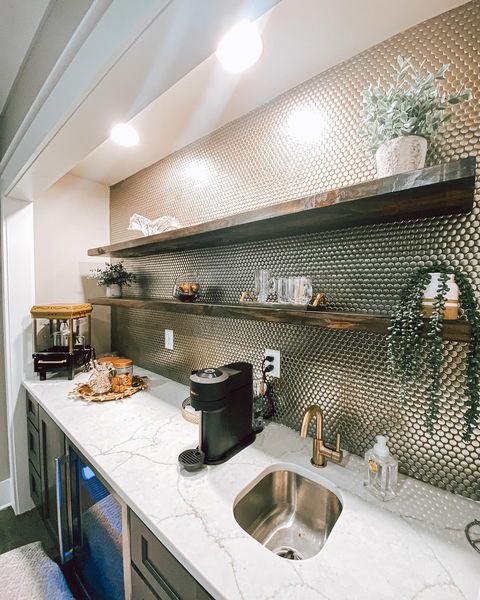When it comes to designing your kitchen or bathroom, backsplashes play a crucial role in enhancing the overall aesthetic appeal. They also protect walls from splashes and spills. Two popular options that homeowners often debate over are tile backsplashes and slab backsplashes. Apart from their visual impact, one of the primary concerns is the cost. In this article, we will delve into the pros and cons of both tile and slab backsplashes to determine which option is more cost-effective for your next renovation project.
Tile Backsplash: The Customizable Choice
Tile backsplashes have long been favored for their affordability and versatility. They offer a wide range of design possibilities without breaking the bank, making them an attractive option for budget-conscious homeowners.

Here are some key advantages and disadvantages of tile backsplashes:
Pros:
- Design Flexibility: With a plethora of tile materials, sizes, colors, and patterns available, you can create a backsplash that perfectly complements your kitchen or bathroom décor. From classic subway tiles to intricate mosaics, the design possibilities are endless.
- Easy Replacement: In the unfortunate event of a cracked or damaged tile, replacing individual tiles is a breeze. This not only saves you money but also eliminates the need to redo the entire backsplash.
- DIY-Friendly: Tile installation can be a DIY project for those with basic handyman skills. This can further cut down on labor costs if you’re up for the challenge.
- Durability: Tiles are generally durable and can withstand everyday wear and tear. However, some materials, such as natural stone, may be more susceptible to chipping or cracking.
Cons:
- Grout Maintenance: Grout lines between tiles can be prone to staining and require regular maintenance to keep them looking fresh and clean.
- Labor Cost: Tile backsplashes are used to be more affordable than their slab counterparts. The cost of materials and installation was significantly lower in prior years, making them an ideal choice for those looking to achieve a stylish look on a budget. Lately, the cost of labor of installing tile backsplash has tipped affordability in favor of slab backsplash. If you enjoy installing tile then you can still save money here!
- Lengthy Installation: This goes hand-in-hand with labor cost. Even for the pros it often takes 2-4 days to complete a tile backsplash installation, slowing down the overall project completion date.
Slab Backsplash: The Upscale and Seamless Statement
Slab backsplashes offer a luxurious and modern look that’s becoming increasingly popular in contemporary designs. Slabs, typically made of materials like marble, granite, or quartz, provide a sleek and uninterrupted visual flow. They can also be customized with different finishes such as polished, honed, or leathered. Here’s a breakdown of the pros and cons of slab backsplashes:

Pros:
- Elegant Aesthetic: Slab backsplashes exude sophistication and elegance. The seamless appearance can lend a high-end feel to your kitchen or bathroom.
- Low Maintenance: The smooth surface of slab backsplashes makes them easy to clean and maintain. There are no grout lines to worry about, reducing the chances of mold or staining.
- Durability: Slabs are known for their durability and can withstand the test of time. They are resistant to chipping and cracking, making them a great investment in the long run.
- Cost Effective: In markets where labor costs have trended higher (such as the Pacific Northwest), slab backsplash can be cheaper because it requires less manual labor.
- Fast: Slab backsplash, depending on the complexity of the job, can often be installed on or around the same day that the countertops are installed, speeding up project completion.
Cons:
- Limited Design Choices: Unlike tiles, which offer endless design options, slab backsplashes can be limited in terms of patterns and colors, as they rely on the natural characteristics of the material.
- Complex Installation: Installing slab backsplashes is a job best left to professionals due to their weight and the intricacies of working with large, heavy pieces of material. This adds to the overall expense.
When it comes to the cost-effectiveness of tile backsplashes versus slab backsplashes, the choice ultimately depends on your budget, style preferences, and long-term goals. Tile backsplashes can be a wallet-friendly DIY option that provides flexibility in design and ease of replacement. On the other hand, slab backsplashes offer a faster, more luxurious, and low-maintenance option with unparalleled durability, but with limited design choices.
Before making a decision, carefully assess your priorities and consult with professionals to get accurate cost estimates for both options. If you’re working within a tight budget and value design versatility, DIY tile backsplashes might be your go-to choice. Conversely, if you’re willing to invest in a statement piece that exudes elegance and can stand the test of time, slab backsplashes might be the ideal match for your space.
In the end, whether you opt for the affordability of DIY tiles or the opulence of slabs, a well-chosen backsplash will undoubtedly enhance the overall aesthetic of your kitchen or bathroom, adding value to your home for years to come. Feel free to contact the Tops Sales Team to assist you in living your best backsplash life!
